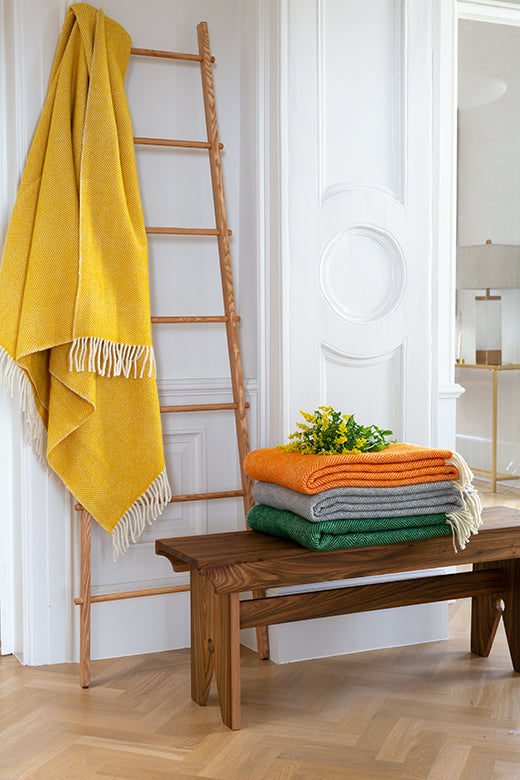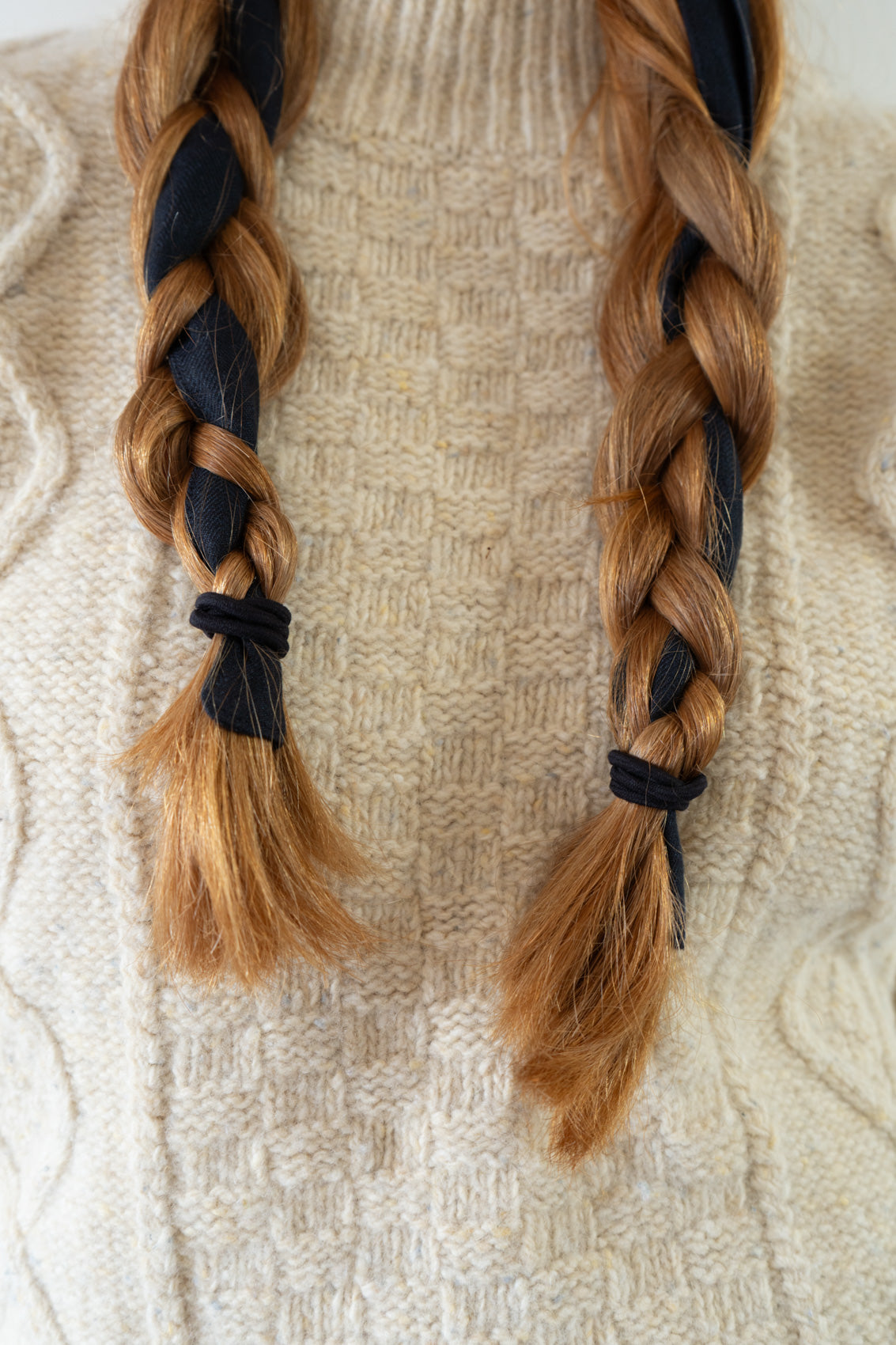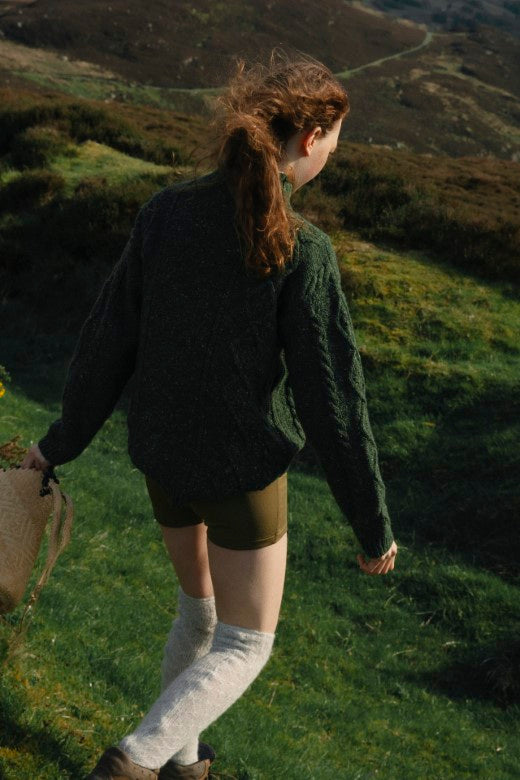Accessories for Home
Accessories to Wear
Women / Men
Lookbooks
The Irish Tricolour

Flown Worldwide with Price
Living Collection
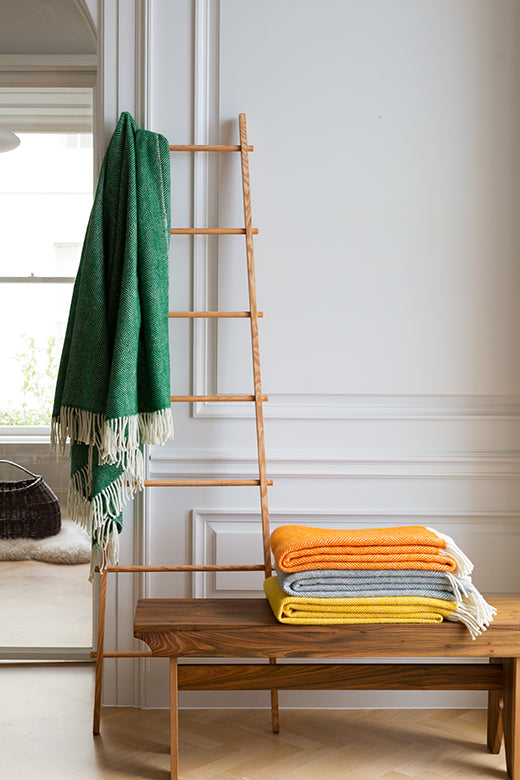
Irish Luxury at Home
STABLE Celebrates
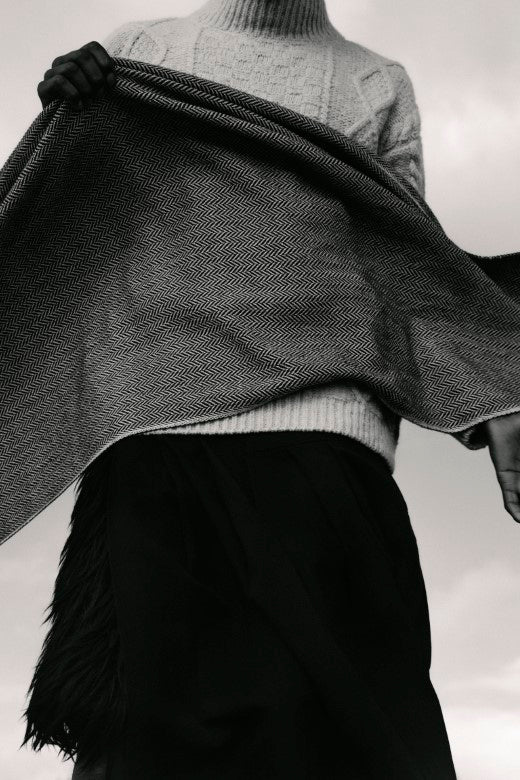
Irish Design Celebrated
The Donegal Aran
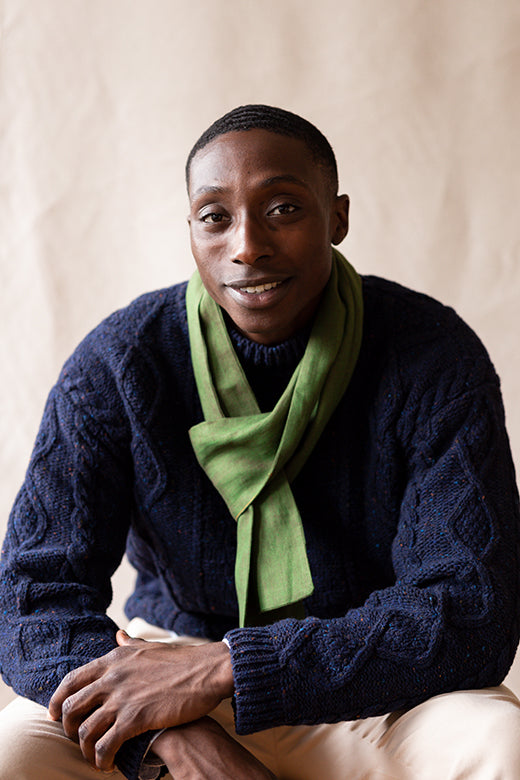
Iconic Irish Garmant
Our Story
Journal
Subheading
Exploring the Deep History of Irish Hand Knitting
To explore the great history of hand knitting in Ireland, we must first journey back to the introduction of sheep to the island in the Neolithic period (4000-2500BC). Sheep as we know them today, are not a native species to our little island, but a species which has evolved from the wild ‘mouflon’ of West Asia. Through selective breeding, humans have ‘developed’ the woolly sheep (or ‘Cáera’ as Gaeilge) that we know today. These hardy creatures were valued in Ancient Ireland for their meat, milk, and wool. By the medieval period, the use and trading of Irish wool was flourishing for use as a warm and sturdy textile.
Spinning Irish Wool – 1910s Aran Islands
As with many heritage crafts, it is impossible to outline their exact path of emergence. This is certainly the case with hand knitting in Ireland. It is thought that the craft was perhaps first introduced by Spanish sailors in the 16th century, evolving in technique and style from then on. However, it would be safe to assume that some variations of the craft were already here given the widespread use of sheep’s wool.
The development of hand knitting in Ireland is linked to the functional value of the craft. This was particularly the case in the more remote, western regions of the country, where fishing was a bedrock industry of coastal communities. Without the likes of gortex and rubber-based materials, to which we have ample access today, fishermen relied on warm, sturdy, and repairable woollen garments. When left unwashed and unscoured, wool yarn retains its natural lanolin oils which give the material its water-repellent properties, important for both sheep and people on the Atlantic coast!
At the end of the 19th century, it was a top-down influence that may have finally led to the establishment of a hand knitting cottage industry on the isolated Aran islands off the coast of Galway. At that time, the ‘Congested Districts Board’ was set-up by the government to support rural communities facing unemployment and food shortages. The Board focused on strengthening the fishing industry in the islands by bringing fishers and their wives from other regions in Britain and Ireland to exchange their skills.
Original Aran Sweater Pattern from Patons
Many historians believe it was this exchange which brought hand-knitting skills from the existing ‘guernsey’ jumper tradition to the Aran islands, where it was adopted and evolved into the Aran knitting craft. While the craft served a functional need for fishermen as a protective garment in their daily lives, it also provided a commercial income for island families when Aran sweaters began to be sold to tourists in Dublin.
The First Vogue editorial spread featuring the Aran Sweater – Vogue Knitting 1957
The popularity of the Aran sweater design took off around mid-20th century when companies like Paton and Standún began commercial production of Aran sweaters and exports to the United States. In noticing the masterful intricate designs, Vogue Knitting published an Aran pattern, and it was this event which propelled the trajectory of the Aran sweater to its iconic status. Soon enough, celebrities such as Grace Kelly, Steve McQueen and the Clancy Brothers could be seen flaunting the classic cable and diamond knit patterns in magazines and films.
The Clancy Brothers in their Signature Aran Sweaters
Regardless of the driving forces behind Aran knitting, whether that be functional necessity or commercial reasons, the craftspeople create works of art with their intricate designs reminiscent of ancient Celtic artwork. Forms like the cable, trellis, diamond, and honeycomb stitches in the unwashed, cream-coloured (báinín) wool yarn, signify the now infamous Aran knitting craft. In view of the ancient relationship that Irish people have had with wool as a textile over thousands of years, we celebrate the beauty and technicality of this skill that has evolved over time. We proudly work with weavers and knitters in Donegal who make our beautiful Handknit Aran Sleeveless Vests, Cable Body Bibs, Box Jumpers, and Aran Jumpers in the traditional báinín style as well as vibrant life-giving colours!
Grace Kelly on a Yacht in an Aran Jumper
Author: Ali Crighton
Suggested articles
What's next?
Get the first look at exclusives by Ireland's best weavers and makers in Irish design, Irish linen, Irish crafts and Irish gifts.
